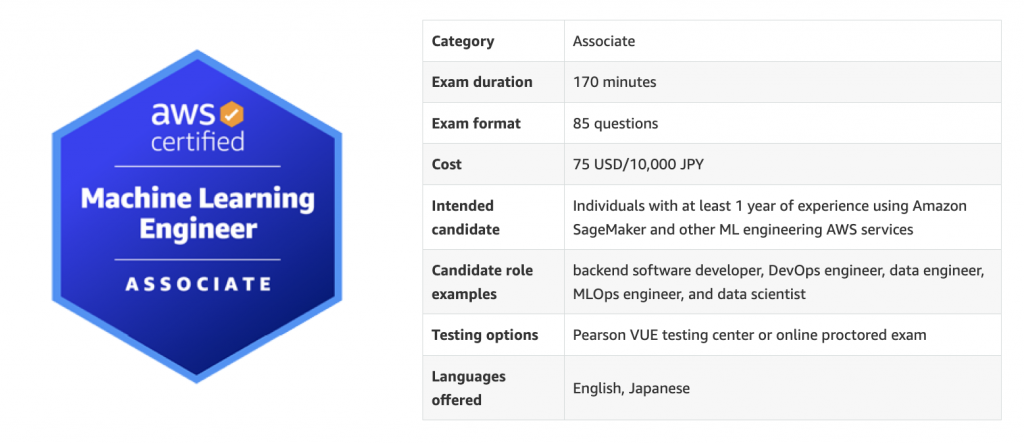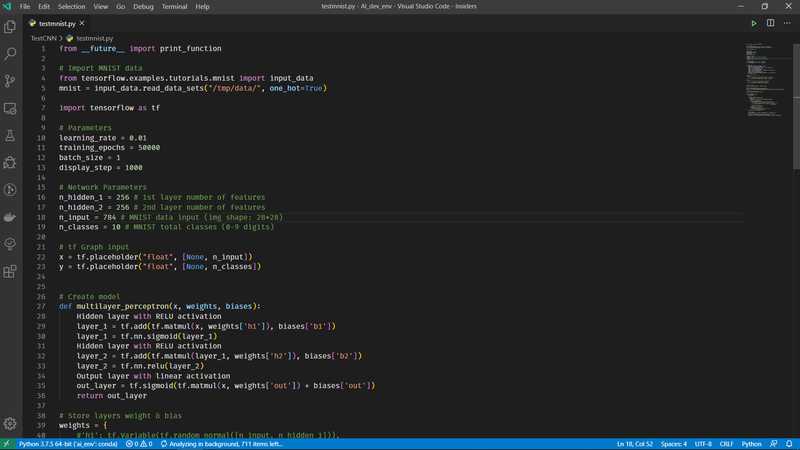All Categories
Featured
Table of Contents
On the various other hand, ML engineers concentrate on building and deploying machine understanding versions. They concentrate on training versions with information to make predictions or automate jobs. While there is overlap, AI engineers handle more varied AI applications, while ML engineers have a narrower concentrate on machine discovering formulas and their useful execution.
Artificial intelligence designers concentrate on establishing and deploying maker knowing designs right into production systems. They work with design, guaranteeing designs are scalable, efficient, and incorporated right into applications. On the various other hand, information researchers have a more comprehensive role that includes information collection, cleaning, exploration, and building models. They are commonly in charge of removing insights and making data-driven decisions.
As companies significantly adopt AI and artificial intelligence technologies, the demand for competent experts expands. Machine discovering designers service innovative jobs, add to innovation, and have competitive incomes. However, success in this field needs continual knowing and keeping up with developing modern technologies and methods. Machine discovering roles are usually well-paid, with the potential for high gaining possibility.
ML is basically different from typical software application growth as it concentrates on teaching computers to gain from information, as opposed to programming specific regulations that are performed systematically. Unpredictability of results: You are most likely utilized to creating code with predictable outcomes, whether your function runs when or a thousand times. In ML, nonetheless, the results are much less particular.
Pre-training and fine-tuning: How these designs are trained on vast datasets and afterwards fine-tuned for details tasks. Applications of LLMs: Such as message generation, sentiment evaluation and information search and access. Papers like "Attention is All You Required" by Vaswani et al., which presented transformers. On the internet tutorials and programs concentrating on NLP and transformers, such as the Hugging Face training course on transformers.
Not known Factual Statements About Machine Learning Engineer
The capability to take care of codebases, combine changes, and fix conflicts is just as vital in ML advancement as it remains in traditional software application projects. The skills created in debugging and testing software applications are very transferable. While the context might change from debugging application reasoning to recognizing concerns in information handling or design training the underlying concepts of organized examination, hypothesis screening, and iterative refinement are the same.
Device discovering, at its core, is greatly dependent on stats and possibility concept. These are critical for recognizing exactly how algorithms learn from data, make predictions, and assess their efficiency.
For those interested in LLMs, a complete understanding of deep discovering architectures is beneficial. This consists of not only the auto mechanics of neural networks yet also the architecture of particular models for various usage cases, like CNNs (Convolutional Neural Networks) for picture handling and RNNs (Recurrent Neural Networks) and transformers for consecutive information and natural language processing.

You should be mindful of these concerns and learn techniques for recognizing, alleviating, and connecting about bias in ML versions. This includes the potential impact of automated decisions and the honest implications. Many designs, especially LLMs, require significant computational sources that are often supplied by cloud platforms like AWS, Google Cloud, and Azure.
Structure these abilities will certainly not just assist in an effective change into ML however likewise make sure that developers can add efficiently and sensibly to the improvement of this vibrant area. Concept is vital, yet absolutely nothing beats hands-on experience. Beginning working with projects that enable you to apply what you've discovered in a functional context.

Develop your tasks: Begin with straightforward applications, such as a chatbot or a message summarization tool, and gradually raise complexity. The area of ML and LLMs is rapidly evolving, with new developments and technologies emerging on a regular basis.
6 Simple Techniques For How To Become A Machine Learning Engineer (With Skills)
Sign up with neighborhoods and discussion forums, such as Reddit's r/MachineLearning or neighborhood Slack networks, to review concepts and get suggestions. Go to workshops, meetups, and seminars to get in touch with other specialists in the field. Add to open-source projects or compose article about your understanding trip and jobs. As you obtain knowledge, begin seeking chances to incorporate ML and LLMs into your job, or look for new roles concentrated on these innovations.
Potential use situations in interactive software program, such as suggestion systems and automated decision-making. Recognizing uncertainty, standard statistical actions, and likelihood distributions. Vectors, matrices, and their function in ML formulas. Mistake minimization strategies and slope descent discussed merely. Terms like design, dataset, functions, tags, training, inference, and recognition. Data collection, preprocessing strategies, model training, evaluation processes, and deployment factors to consider.
Decision Trees and Random Woodlands: Intuitive and interpretable designs. Support Vector Machines: Optimum margin classification. Matching trouble kinds with ideal designs. Balancing performance and complexity. Basic framework of semantic networks: nerve cells, layers, activation features. Layered calculation and onward breeding. Feedforward Networks, Convolutional Neural Networks (CNNs), Recurrent Neural Networks (RNNs). Image acknowledgment, series forecast, and time-series evaluation.
Data circulation, makeover, and attribute engineering techniques. Scalability concepts and performance optimization. API-driven techniques and microservices integration. Latency administration, scalability, and variation control. Continual Integration/Continuous Release (CI/CD) for ML workflows. Model monitoring, versioning, and efficiency monitoring. Identifying and dealing with adjustments in design efficiency in time. Resolving efficiency bottlenecks and resource administration.
How Machine Learning Engineer: A Highly Demanded Career ... can Save You Time, Stress, and Money.
You'll be presented to three of the most appropriate elements of the AI/ML discipline; managed understanding, neural networks, and deep knowing. You'll understand the distinctions in between conventional programming and device knowing by hands-on development in supervised learning before developing out intricate distributed applications with neural networks.
This program functions as a guide to equipment lear ... Program More.
The average ML process goes something similar to this: You need to understand business problem or purpose, before you can try and fix it with Artificial intelligence. This frequently implies research and partnership with domain name degree professionals to define clear purposes and requirements, in addition to with cross-functional groups, consisting of information scientists, software designers, item supervisors, and stakeholders.
: You pick the very best design to fit your objective, and after that educate it using libraries and frameworks like scikit-learn, TensorFlow, or PyTorch. Is this working? An integral part of ML is fine-tuning designs to get the preferred outcome. At this stage, you review the efficiency of your picked machine discovering model and afterwards make use of fine-tune version specifications and hyperparameters to improve its efficiency and generalization.
Does it continue to function currently that it's real-time? This can also imply that you upgrade and re-train models frequently to adjust to altering data circulations or company demands.
Our Top Machine Learning Careers For 2025 Ideas

Device Discovering has taken off in current years, many thanks in part to advances in data storage space, collection, and computing power. (As well as our desire to automate all the things!).
That's simply one job publishing site also, so there are even much more ML work out there! There's never been a far better time to obtain into Device Understanding.
Here's things, tech is among those sectors where a few of the greatest and finest people worldwide are all self taught, and some also openly oppose the concept of individuals obtaining a college degree. Mark Zuckerberg, Costs Gates and Steve Jobs all went down out prior to they got their levels.
The Only Guide for Machine Learning Certification Training [Best Ml Course]
As long as you can do the job they ask, that's all they really care about. Like any new skill, there's definitely a discovering curve and it's going to feel difficult at times.
The main differences are: It pays insanely well to most other occupations And there's an ongoing learning element What I mean by this is that with all technology roles, you have to stay on top of your video game to ensure that you know the present skills and adjustments in the market.
Check out a few blogs and try a few tools out. Kind of just how you might discover something new in your existing job. A whole lot of individuals who function in technology really appreciate this since it suggests their job is always altering a little and they take pleasure in discovering brand-new things. But it's not as busy an adjustment as you might assume.
I'm mosting likely to mention these abilities so you have a concept of what's needed in the job. That being said, a great Device Understanding program will show you mostly all of these at the very same time, so no need to stress. Some of it might also appear challenging, yet you'll see it's much easier once you're applying the theory.
Latest Posts
How To Land A High-paying Software Engineer Job Without A Cs Degree
Apple Software Engineer Interview Questions & How To Answer Them
How To Master Whiteboard Coding Interviews